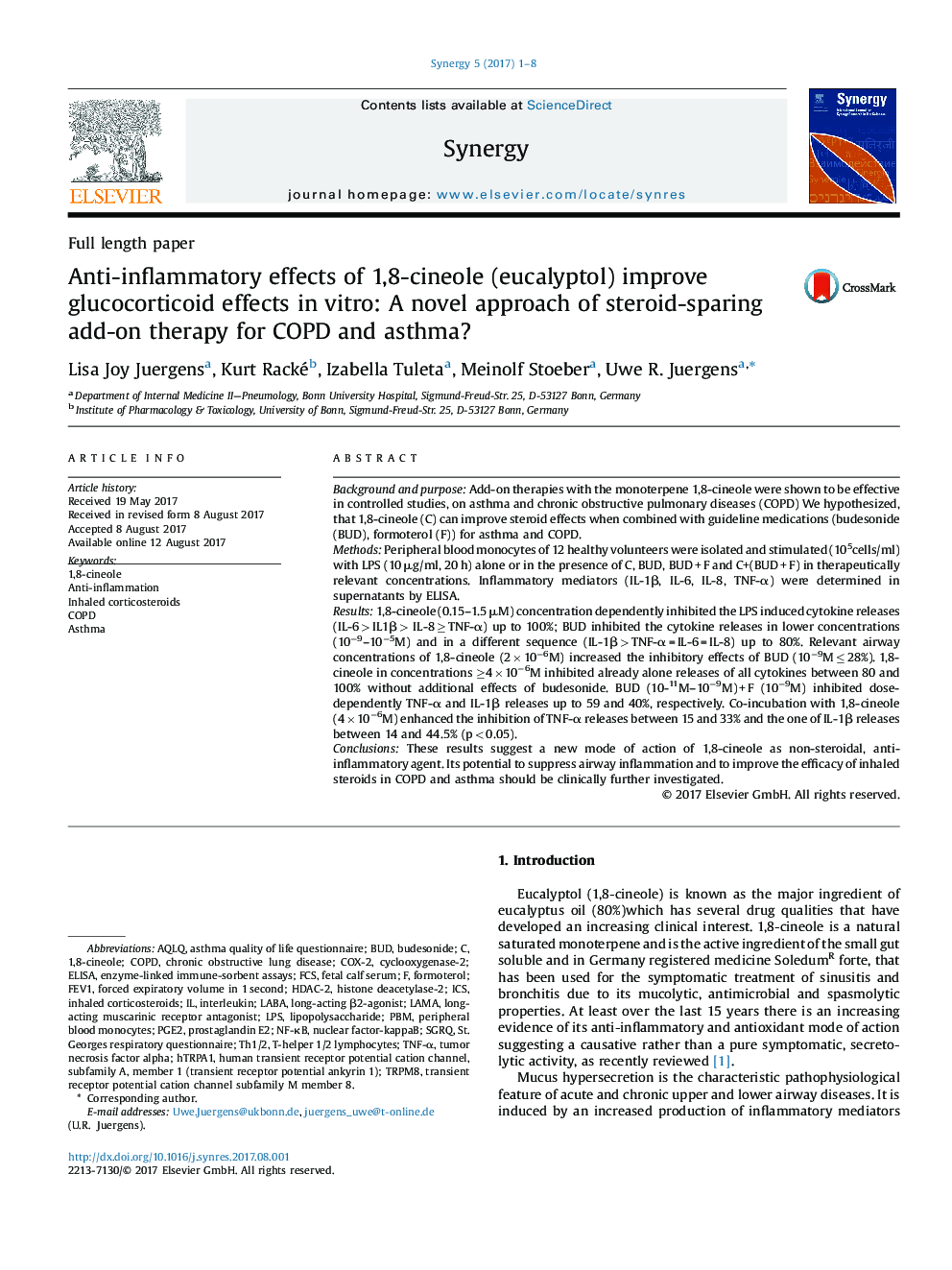| Article ID | Journal | Published Year | Pages | File Type |
|---|---|---|---|---|
| 5549493 | Synergy | 2017 | 8 Pages |
Background and purposeAdd-on therapies with the monoterpene 1,8-cineole were shown to be effective in controlled studies, on asthma and chronic obstructive pulmonary diseases (COPD) We hypothesized, that 1,8-cineole (C) can improve steroid effects when combined with guideline medications (budesonide (BUD), formoterol (F)) for asthma and COPD.MethodsPeripheral blood monocytes of 12 healthy volunteers were isolated and stimulated (105cells/ml) with LPS (10 μg/ml, 20 h) alone or in the presence of C, BUD, BUD + F and C+(BUD + F) in therapeutically relevant concentrations. Inflammatory mediators (IL-1β, IL-6, IL-8, TNF-α) were determined in supernatants by ELISA.Results1,8-cineole (0.15-1.5 μM) concentration dependently inhibited the LPS induced cytokine releases (IL-6 > IL1β > IL-8 â¥Â TNF-α) up to 100%; BUD inhibited the cytokine releases in lower concentrations (10â9-10â5M) and in a different sequence (IL-1β > TNF-α = IL-6 = IL-8) up to 80%. Relevant airway concentrations of 1,8-cineole (2 Ã 10â6M) increased the inhibitory effects of BUD (10â9M â¤Â 28%). 1,8-cineole in concentrations â¥4 Ã 10â6M inhibited already alone releases of all cytokines between 80 and 100% without additional effects of budesonide. BUD (10-11M-10â9M) + F (10â9M) inhibited dose-dependently TNF-α and IL-1β releases up to 59 and 40%, respectively. Co-incubation with 1,8-cineole (4 Ã 10â6M) enhanced the inhibition of TNF-α releases between 15 and 33% and the one of IL-1β releases between 14 and 44.5% (p < 0.05).ConclusionsThese results suggest a new mode of action of 1,8-cineole as non-steroidal, anti-inflammatory agent. Its potential to suppress airway inflammation and to improve the efficacy of inhaled steroids in COPD and asthma should be clinically further investigated.
Graphical abstractDownload high-res image (185KB)Download full-size image
